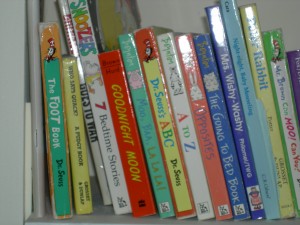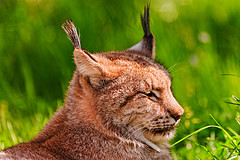Swarthmore presents an interesting mix of uniformity and decentralization. As a residential, undergraduate liberal arts institution, it is easy to summarize. Our size is small, and retention and graduation rates are very strong so that enrollment is very predictable from year to year (about 1500). There are no graduate students. Generating enrollment projections can be downright boring! Standards are high for students coming in and going out. Our faculty is heavily reliant on tenure lines. There are no separate schools creating the silos that are so vexing to my counterparts trying to do institutional research at larger colleges and universities.
But due to a history and culture of very strong faculty governance, our departments are among the most autonomous that I’ve seen, even at very similar institutions. The most important decisions are made with considerable input by and deference to the faculty, if not by the faculty itself. On one hand that means that members of the administration are generally regarded in a collegial manner, and that once decisions are made, they are truly made. On the other hand it can be a delicate matter to introduce change, especially change necessitated by external forces. Though occasionally frustrating (and quite slow), I think this is generally an excellent thing. (It does, however, take quite a toll on our faculty in terms of their workload.)
When Swarthmore, like most institutions, was first “dinged” by our accrediting agency for not doing enough formal assessment (2004), the initial response was understandable indignation. Self-reflection and evaluation is what we do best. We talk endlessly about what we do, how we do it, and how we could it better – in committees, in hallways, with our students, alumni, and each other. I have never met anyone here who doesn’t care deeply about serving our students.
But upon gathering ourselves to address this concern, the faculty designated an ad hoc committee – comprised entirely of faculty. This group considered the criticism, looked at what we do and what we might do better, and in 2006 recommended a plan. This plan was discussed by the entire faculty, modified, and finally approved by the faculty, and stands as our foundational document for academic assessment. It’s an elegant document. They took a thoughtful and measured approach, included key elements and ideas that we’ll use and build on for years, and the best part is, the faculty owns it.
We are now at a stage of identifying places where we need to bolster our efforts in assessment. My position has been modified so that I now report one third time to the Provost’s Office to work with faculty on this process. It has been my privilege to participate in meetings with chairs in each division this past fall, and at those meetings I am struck again by the autonomy of our faculty, departments, and programs. As an outsider, it is a little scary. Though no one here is interested in creating a uniform approach or in any way dictating to departments what they should do for assessment, particular steps ought to be taken for the process to be meaningful, and I wonder how that will happen. But then I remember what it is that the faculty are fiercely protecting – it’s not about turf, it’s about students and the experiences the department is providing them. Since assessment is itself about student learning, I have no doubts that the members of the faculty will make it work.
 Last week I participated in a workshop sponsored jointly by the Center for Digital Storytelling (CDS) and Swarthmore College. It was an intense three-day experience, in which about a dozen participants were taught the basics of constructing an effective narrative using images, music, and voice. The folks from CDS (Andrea Spagat, Lisa Nelson-Haynes) were just wonderful – skilled, patient, experienced – as were our ITS staff members who supported the workshop (Doug Willens, Michael Jones, and Eric Behrens).
Last week I participated in a workshop sponsored jointly by the Center for Digital Storytelling (CDS) and Swarthmore College. It was an intense three-day experience, in which about a dozen participants were taught the basics of constructing an effective narrative using images, music, and voice. The folks from CDS (Andrea Spagat, Lisa Nelson-Haynes) were just wonderful – skilled, patient, experienced – as were our ITS staff members who supported the workshop (Doug Willens, Michael Jones, and Eric Behrens).
